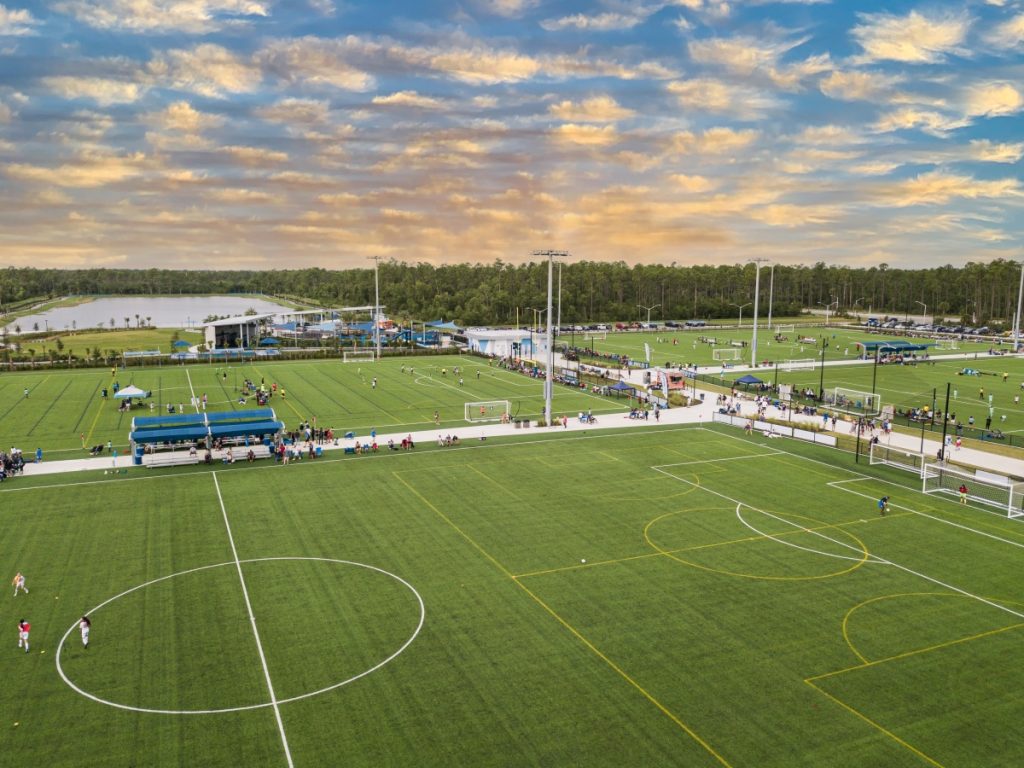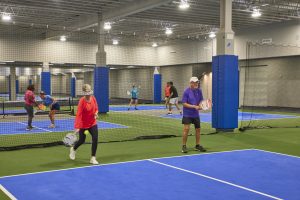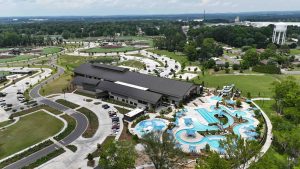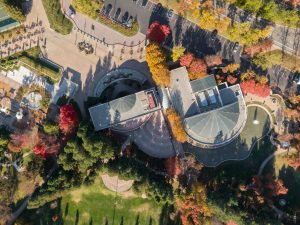Image courtesy of Paradise Coast Sports Complex
Are you ready to transform your community and foster a love for sports among the youth? This blog post aims to provide you with a comprehensive guide that outlines the crucial aspects to consider when developing a youth sports facility. From understanding your community’s needs to ensuring guest safety, each factor plays a pivotal role in the success of your venue. Whether you’re a seasoned developer or a passionate parent, you’ll find useful information to help turn your vision into reality. So, let’s dive in and start building a legacy in your community.
Needs
Figuring out what your community wants and needs is the cornerstone of planning an effective youth sports facility. It involves a deep dive into the demographic makeup of the area and the existing resources of the community. This exercise is essential as it helps to identify the specific sports that should be offered to best serve the community’s interests.
The involvement of youth in athletics varies from community to community and recognizing these differences can guide decisions on the necessary equipment, resources, and programs to include in the facility. For example, a community with a high interest in soccer would benefit more from a well-equipped soccer field than a basketball court. It doesn’t mean that the facility can’t offer both sports, but it can help figure out which sport or sports should be the primary focus. In essence, a thorough analysis of the community paves the way for a sports facility that is not just a building, but a hub that reflects the community’s needs and positively influences their overall wellness.
Community engagement and collaboration are critical in the planning process and can help you learn more about what residents want and need. By involving the local community, planners can gain valuable insights into specific needs and concerns, which can then be addressed in the design and operation of the facility. This ensures that the facility is safe for youth athletes and harmoniously integrated into the wider community. Whether it’s incorporating features that cater to community events or considering aspects like noise control to minimize disturbance to residents, such collaboration can result in a facility that truly meets the needs of all stakeholders.
Key service needed: Market Opportunity Report or Feasibility Study
Site Selection
Selecting an optimal location for a sports complex requires careful consideration of various factors. The location of competitors and local attractions that are popular with your target customers as well as whether a site meets a sport’s physical requirements are among the top considerations when choosing a site for your sports complex.
If you plan on building an outdoor complex with several football/soccer fields, you will need a larger land footprint than if you were to build a large indoor basketball/volleyball facility. Both will need a lot of space, including for parking, but the sports your facility hosts greatly determines the amount of land needed.
It is also important that the location is easily accessible to athletes, coaches, and spectators coming to your facility. Being close to a major highway or airport can increase the number of events, tournaments, and subsequently visitors that come to your facility. Overall, the site selection and development of a sports complex involves a holistic approach that balances the needs of the athletes, the expectations of the community, and the practicalities of the location and design.
Designing with Safety in Mind
When developing a youth sports facility, safety should always be a primary concern. Field or court material selection plays a crucial role in helping to prevent injuries. For instance, using shock-absorbent materials can reduce the risk of sprains and fractures during high-impact sports.
We have another blog post on our site about the different types of turf and their benefits that can provide you with more information on turf selection.
Once you have your field and court material selected. It is important to invest in proper, high-quality equipment for your sports such as basketball hoops, volleyball nets and posts, and soccer goals. Not only does high-quality equipment enhance the playing experience, but it also minimizes the risk of injuries.
Regular maintenance of both the facility and equipment is an essential aspect of ensuring safety. This includes routine checks and prompt repairs to keep the facility in optimal condition, thereby preventing accidents that may result from overlooked wear and tear.
We previously posted an article about design features that improve safety at sports facilities that dives deeper into some suggestions for keeping guests safe in all areas of your facility.
Financial Planning
Proper financial management plays an important role in enabling the facility to deliver high-quality services to the athletes and parents using the venue. For instance, with a well-planned budget, the facility can invest in modern sports equipment that enhances the playing experience for young athletes. For basketball and volleyball facilities, modern equipment can even be installed that allows the volleyball posts and nets and the basketball hoops to electronically raise and lower from the ceiling. This makes switching between the two sports or between sports and formal events much easier and much quicker.
Good financial planning also allows you to hire skilled staff who are essential for maintaining a high standard of service. As a result, the facility will be well-maintained, safe, and clean, which significantly contributes to creating a positive and memorable experience for everyone who uses it.
It is a good idea to prepare a financial forecast to account for spending and to better determine the facility’s revenue potential by reviewing a variety of factors that impact revenue generation, including the program plan, land requirements, and hard and soft costs. Therefore, integrating effective financial planning from the onset is an indispensable step when developing a youth sports facility that aims to provide exceptional value to the community for many years to come.
The design and development of a youth sports facility is a project that demands thorough planning, keen attention to detail, and a deep understanding of the community it will serve. Every aspect contributes to the long-term success of the facility. The potential impact on the community necessitates careful consideration and proactive measures to ensure a harmonious integration. It’s not just about building a sports facility, it’s about creating a hub for healthy living, community pride, and youth development. So, embrace the challenge and create a sports facility that meets your community’s needs and exceeds expectations. If you need any help along the way, feel free to contact us or give us a call at (727) 474-3845.






